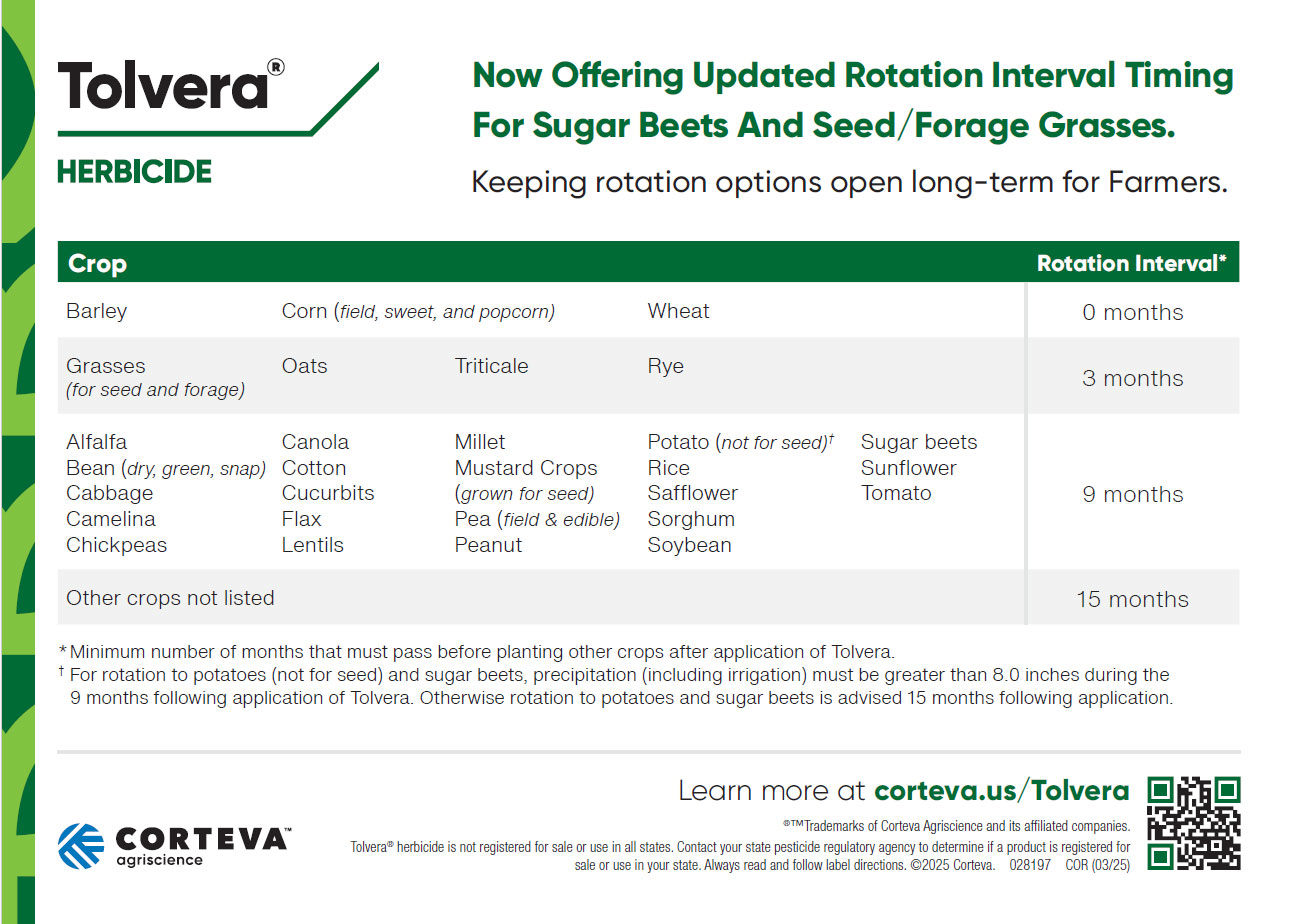Update for Tolvera® Shortens Rotational Interval to Sugarbeets, Extends Flexibility in Cereal Grains

Farmers in the Pacific Northwest (PNW) and northern Plains growing wheat, durum or barley this season can now rotate to sugarbeets in nine months thanks to a recent update to the label for Tolvera® herbicide by the U.S. Environmental Protection Agency (EPA).
“Farmers growing spring and winter wheat, durum and barley … can benefit from the great weed control Tolvera herbicide delivers and rotate to sugarbeets or any of the other seed and forage grasses per the label the next cropping season,” says Grant Harms, market development specialist, Corteva Agriscience.
When a product is used to protect a crop, the rotation interval listed on the product label directly impacts what subsequent crops may be planted in that field.
If farmers in the PNW and northern Plains planted winter wheat last fall or if they are going to plant spring wheat this season, selecting Tolvera® herbicide for weed control would be an easy way to increase their farming flexibility.
“Friendly rotational intervals definitely afford farmers more crop options moving forward,” Harms says. “Some farmers in these regions do not grow cereal crops every year. They may rotate to something like sunflowers. It is similar in some respect to how farmers in the Midsouth and Southeast rotate soybeans and corn, except sunflowers, lentils, peas and sugarbeets are more sensitive to herbicide carryover. Thanks to this label change, that’s a worry no more!”
From granulated sugar and biofuel to animal feed and food and beverage products, sugarbeets are a commodity with diversified applications. Those applications could strengthen demand for sugarbeets.
Based on the April 2025 U.S. Department of Agriculture Economic Research Service’s (ERS’s) Situation and Outlook Report, sugarbeet growers intend to plant 1.32 million acres for the upcoming 2025-26 crop year.1 Florida’s cane sugar production is lowered by 41,000 short tons, raw value (STRV) to 1.930 million STRV based on lower yield forecasts, so sugarbeets may be a viable commodity option with economic potential.
Although commodity markets and planting intentions fluctuate, farmers across the PNW and northern Plains who are planting wheat, durum or barley should consider adding Tolvera herbicide to their 2025 weed control program and give them themselves that nine-month plant-back option of rotating to sugarbeets.
“It’s all about giving themselves more flexibility in their crop rotation decisions,” Harms says. “It just makes good production sense now that this label change has been approved.”
See below for the rotation interval after applying Tolvera herbicide for sugarbeets and seed/forage grasses.

Log on to Corteva.us/Tolvera or visit with your Corteva Agriscience sales representative to learn more about Tolvera herbicide and the entire portfolio of Corteva Agriscience crop protection cereals solutions.
1Abadam, V. 2025. Sugars and Sweeteners Outlook: April 2025. https://ers.usda.gov/sites/default/files/_laserfiche/outlooks/111409/SSS-M-440.pdf?v=44251
Tolvera® is not registered for sale or use in all states. Contact your state pesticide regulatory agency to determine if a product is registered for sale or use in your state. Always read and follow label directions.
Find expert insights on agronomics, crop protection, farm operations and more.